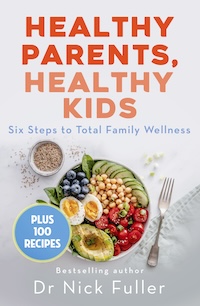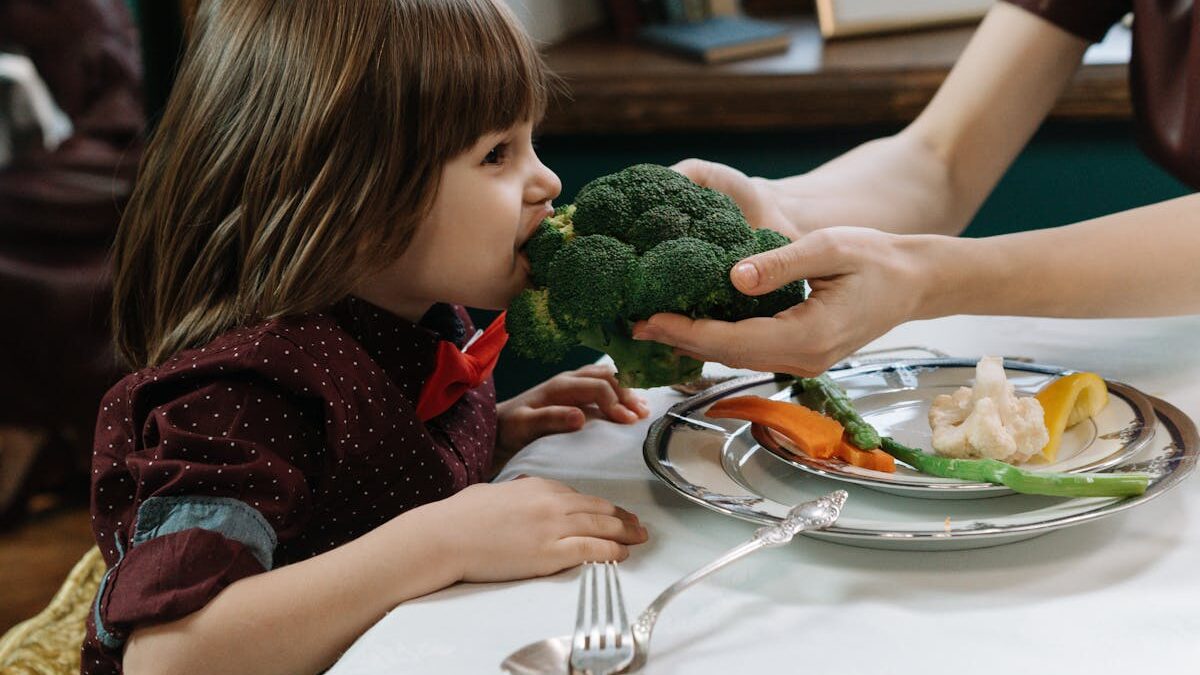The answer is simple: whole foods. They’re the most satisfying of all foods, and they’re the most nutritious too! When foods are tested in the laboratory, they are ascribed a value that scientists refer to as the satiety index.
Refined foods, such as white bread, chips, cake, croissants and other baked goods, are low in satiety and not as filling, meaning we often eat more of them than is good for us.
On the other hand, whole foods are high on the satiety index and fill us up for long periods of time. These include fresh fruit and vegetables, whole grains, beans, nuts and meat—foods found in their natural state and typically high in fibre and protein, keeping you fuller for longer while also giving you the nutrients and energy needed to thrive. Filling your child up on wholesome and nutritious foods will help displace less healthy choices in their diet.
The 7 types of food to feed your child every day
The simplest way to know what to feed your child is to learn what foods can be eaten every day and what foods should only be eaten sometimes. This distinction might be helpful for you to remember when deciding what to eat yourself, too!
Bearing this in mind, the basis of your child’s daily food intake after one year of age should include the following everyday foods:
- Unlimited fruit and vegetables (all are suitable but let them enjoy a variety). Despite what you may have heard, your child can never eat too much fruit and veg. It’s also perfectly fine if your child eats a lot of fruit and very little veg—they’re still getting the necessary nutrition for healthy growth and development.
- Plenty (three serves per day) of full-fat dairy products such as milk, cheese, cream cheese and yoghurt, or suitable dairy-free alternative foods in the case of allergies. You can give your child cow’s milk with breakfast, lunch and dinner up to the age of two, and with breakfast and dinner from then on.
- Lots of 100 per cent nut butter of any kind is fine from the age of six months, or nuts (two large tablespoons or a large handful per day, as a guide) when they are at least five years old (to avoid choking).
- A wholegrain carbohydrate with three meals per day. For example, wholegrain bread or pasta, brown rice or other coloured rice, barley, buckwheat, oats or quinoa.
- Plenty of fish or seafood with at least three meals per week. You can try boneless fish fillets or tinned tuna. If your child has allergies, the omega-3 they’d typically get from eating seafood can instead be sourced from foods like nuts and seeds, canola oil or fortified foods like eggs.
- Protein—lean or “heart smart” cuts of meat (be sure to trim all visible forms of fat off the meat), tofu, legumes or eggs—with each of the three main meals per day.
- Water, with all snacks and meals.
In the video below, Dr Nick discusses how to get kids to enjoy the foods they should have every day, putting them on a path towards a positive relationship with food, exercise and sleep.
Foods to feed them . . . sometimes
While whole foods can be eaten every day, “sometimes” foods should only be eaten occasionally by you and your child—ideally once per week, and no more than twice per week. Similarly, fast food, takeaway or dining out should also be kept to once or twice per week for the whole family.
The following foods are just a few examples, not an exhaustive list, of what should be kept in the “sometimes” basket. These “sometimes” foods include:
- chips
- biscuits
- snack bars, energy bars or muesli bars
- lollies and chocolate
- savoury baked goods and pastries
- ice-cream
- cakes (including banana bread—don’t let the fruit in the name fool you!)
The main reason for these foods being on the “sometimes” list is because they are very low in nutrition (or have no nutrition) and/or are packed full of “empty calories”—calories that don’t provide nutrition and won’t fill you or your child up.
A good rule of thumb is to think of anything processed or found in the confectionery aisle as a sometimes food.
Clever marketing and misleading food packaging can make things confusing, so be mindful that just because something is labelled “health food”, “gluten free”, “dairy free”, “wheat free” or “vegan” doesn’t mean it is better for your child. It might still be loaded with added sugar and fat and needs to be thought of as an occasional treat, not an everyday food.
You might find it helpful to let your child choose their favourite treat, so they have control over what they’re eating.
Read next:
- 4 plant-based foods to eat every week (and why science suggests they’re good for you)
- There are only four things children under five should be drinking. Can you guess which four?
- Why you shouldn’t force your kids to finish their food

This is an extract from Healthy Parents, Healthy Kids by Dr Nick Fuller.
How helpful was this article?
Click on a star to rate it!
0 / 5. 0
Be the first to rate this post!
Dr Nick Fuller
Related posts
Subscribe
Receive personalised articles from experts and wellness inspiration weekly!

